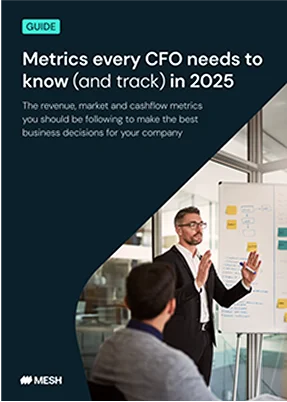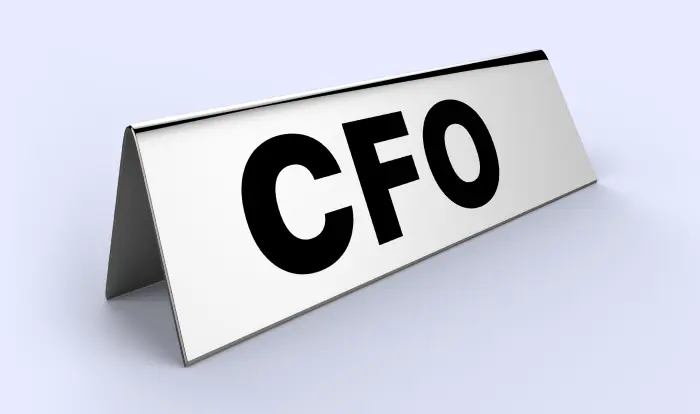The CFO is one of the most interesting roles in the C-Suite. Once simply the head number cruncher who provided financial information to stakeholders, today’s CFO analyzes data, makes forecasts, and helps drive the direction of the company.
Increasingly, CFOs set the strategy for their organization. They make recommendations on everything from product direction to go-to-market strategy. Their forecasts are used to drive product and marketing decisions, and performance bonuses may be based on growing market share. The best CFOs aren’t simply experts in accounting or finance; they are strategic visionaries and team leaders.
Savvy companies often view the CFO as an investment rather than an expense. No doubt, one of the first things a savvy CFO does upon taking on a new role is to find quick savings that justify a high salary.
Defining the Role of the Chief Financial Officer (CFO)
As you would expect from the title, the CFO is the highest ranking financial professional in the organization. Their responsibilities start with balancing revenues and expenses, overseeing financial planning, and building a financial team. The CFO helps shape the financial tech stack the company will use and ensures that all financial reports are accurate and completed on time. They are responsible for cash flow, taxation issues, and financial planning.
As alluded to earlier, the CFOs role has extended far beyond traditional activities. With CEOs pushing for a more aggressive growth and expansion strategy, CFOs act as their strategic partner, shaping the company’s growth plan with a deep understanding of the numbers that bring expansion to fruition.
CFOs are relied upon for their ability to read the market, study the numbers, and produce accurate forecasts. That information is used for everything from assessing mergers and acquisitions to expanding into a new market. Their forecasting models influence pricing decisions, go-to-market strategies, and obtaining funding.
Great CFOs see the big picture laid out in front of them and have the financial understanding to bring that vision to life.
The CFO’s Position in the C-Suite
In most organizations, the CFO is the third highest ranking official, behind the CEO and the COO. The CFO reports directly to the CEO, and, when applicable, works closely with the board of directors.
Most CFOs have a deputy as a direct report and work closely with senior leadership both within the financial sector and from across the company.
In addition to internal teams, the CFO is accountable to external stakeholders as well. They must answer to regulators, tax professionals, and – in a publicly traded company – the Securities and Exchange Commission.
The CFO’s Duties & Responsibilities
As mentioned above, the CFO’s responsibilities are twofold. First and foremost, they are responsible for the day-to-day financial health of the company. Equally as important, they use their financial understanding to advise the CEO and guide strategic decisions. Their strategic value is only as good as their grasp of the company’s financial health.
The CFO needs to stay on top of revenue and earnings goals, as cash flow is vital to staying afloat today and planning for the future. As a result, they are responsible for multiple areas within the organization, including:
- Liquidity
- Return on Investment
- Forecasting
- Reporting
- Risk Assessment and Management
- Leadership
Additionally, they need strong leadership skills to get the most out of their team and command the respect of those who use their forecasts.
Liquidity
CFOs ensure that a company’s assets are available to be used to pay off any short-term liabilities. Called liquidity and typically expressed as a ratio or percentage, it shows what that company owes compared to what it owns.
Return on Investment (ROI)
Simply put, ROI is the amount of return received for an investment. Traditionally, ROI was used to calculate the return of dollars following an investment into something like an advertising campaign. However, ROI has advanced significantly and is now used as a tool to measure the value of almost every major purchase.
For example, upgrading from manual HR processes that required three people and cost $135,000 a year in salaries to an automated software platform that cost $90,000 a year in licenses and maintenance costs brings a $45,000 savings, or a 50% return on investment.
Nearly every software tool on the market today, including cybersecurity tools, offers the promise of improved productivity and can be viewed through the lens of ROI.
Part of the CFO’s focus is on leveraging new software and other services that deliver ROI. Then, they use their understanding of the company’s overall financial position to evaluate whether it is worthwhile.
Forecasting
CFOs don’t just report on what they see; they also report their belief about what the future will hold. Those forecasts are based on different data sets, including historical performance, competitors, and changes happening in the market.
Based on those forecasts, the company will make product decisions, personnel decisions, and capital spending decisions.
In addition to internal data, CFOs rely on government data, analyst recommendations, and news media, as well as input from board members, colleagues within the industry, and lenders.
Reporting
Financial reports, which include balance sheets, cash flow statements, and P&L statements, are used across the company by anyone trying to understand the organization’s financial footing. Those reports are validated by the CFO, who attests that they are accurate and follow accepted accounting standards.
Risk Assessment and Management
Risk assessment and management are part of the CFOs responsibility. Their understanding of financial matters makes them the first line of defense in protecting against risk-laden activities. Furthermore, their role as strategists gives them a birds’ eye view of the happenings within the company and positions them in a way that can identify risky activities.
There are a number of different types of financial risks that they are on the lookout for. Debt risk and liquidity risk appear on their books and should be easily identified by the CFO. Compliance risk, which comes from a failure to report or file financial information on time also comes straight out of their department.
Meanwhile, operational risk relating to strategic decision making, personnel decisions, and processes should be visible to the CFO. Outside risks like supply chain and security risks are also visible to the CFO, who has the authority and ability to mitigate those risks.
Leadership Skills
As high-ranking management, CFOs are expected to demonstrate leadership to the different teams in the organization. Strong communication skills are critical to that effort, as it helps align visions and guide employees who might otherwise go their own way.
CFOs need to display the courage to do what’s right and challenge those when situations call for it. They must maintain their composure and cultivate the big picture to help the organization continually grow.
The Future – CFOs and Automation Technology
Not long ago, the only time a CFO had access to up-to-date financial information was on the day annual and quarterly reports were released. Every other day of the year, the CFO relied on the information in the reports and trends that had been identified when comparing those reports to previous quarters or years.
Today, there are many tools that aid the CFO in getting a real-time, full financial picture every day of the year. Automation has changed finance for the better, enabling it to react in real time to changes in the market or the company’s financial environment. At the same time, having the full picture at any moment allows for proactive decision making as well.
AI-powered solutions help extend and improve the predictive powers of the CFO. Through the precision of algorithms, and multiple data sets covering millions of data points, CFOs can improve their forecasting reliability. Rather than spending time and energy on repetitive tasks, machines automatically handle processes, leaving the CFO more time to focus on solving complex challenges.
Spend management is one area where we are seeing more optimization through automation.
There are toolsets that advise purchasing departments on lower-cost options, while centralized spend limits and vendor locks automatically prevent out-of-control spending. Automated workflows eliminate red tape and simplify approved purchases while preventing unauthorized orders from being processed. Reports are automatically generated, saving time and optimizing the information presented to stakeholders.
Payroll management is another area that introduces critical automation to optimize time-consuming manual processes. These tools are capable of tracking vacation balances, handling pensions, and generating pay stubs. When coupled with employee self-service features, it reduces the amount of time HR personnel spend answering questions.
Automating Expense Management is one of the simplest ways CFOs can manage their company’s expenses. The CFO has access to see and control every transaction across every department. Automated notifications alert the CFO when budgets are at risk so that there are no surprises at the end of the quarter. Automated expense reports, including one-click reconciliation, ensure that information is always available when needed.
Automation and AI help save money as well. Insights generated from these systems can advise new ways to save, such as by identifying lower-cost application alternatives. As a result, CFOs can easily point to a return on their technological investment.
Taking on the Role
The CFO is an exciting position. For some, like former Pepsi CEO Indra Nooyi, it is a stepping stone toward the corner office. Those who make the leap tend to be innovators who embrace innovative technologies, automation, and AI tools.
Regardless of whether the CFO role is an endpoint or just a stop on an upward career track, the position has evolved. Embracing the role of a strategic leader requires the adoption of new technology and new tools, These will enable you to develop the insights needed to deliver the most value to your company, and perform as a visionary leader in the role.
Mesh Payment’s spend management platform is ideal for CFOs looking for insight into their company’s spending. Book your demo today to learn more!
Metrics CFOs need
to track to keep business thriving
Download the Guide

-
Get the latest blogs from Mesh by subscribing to our newsletter







